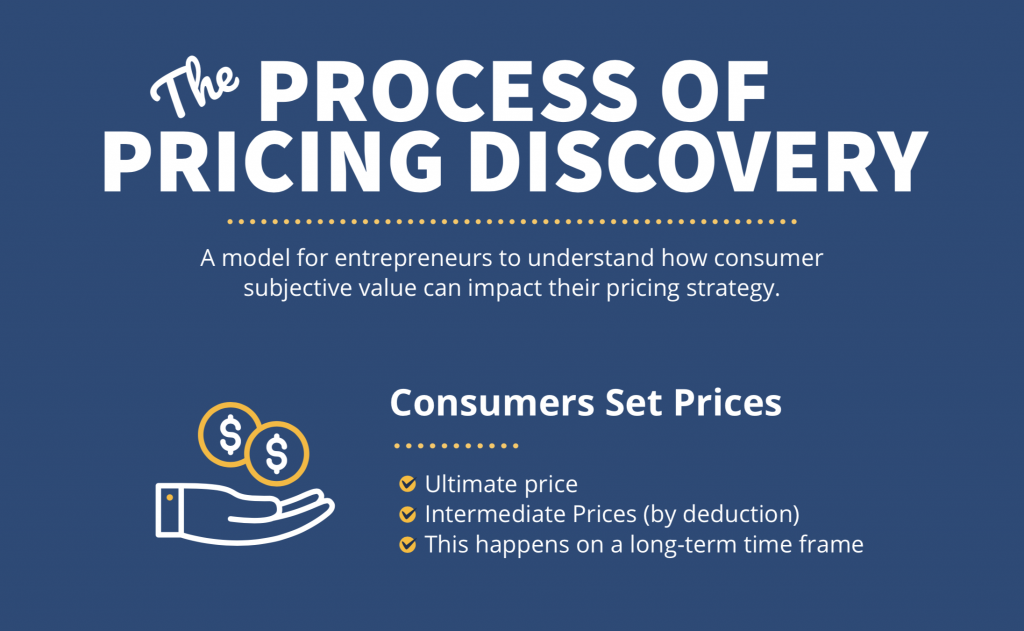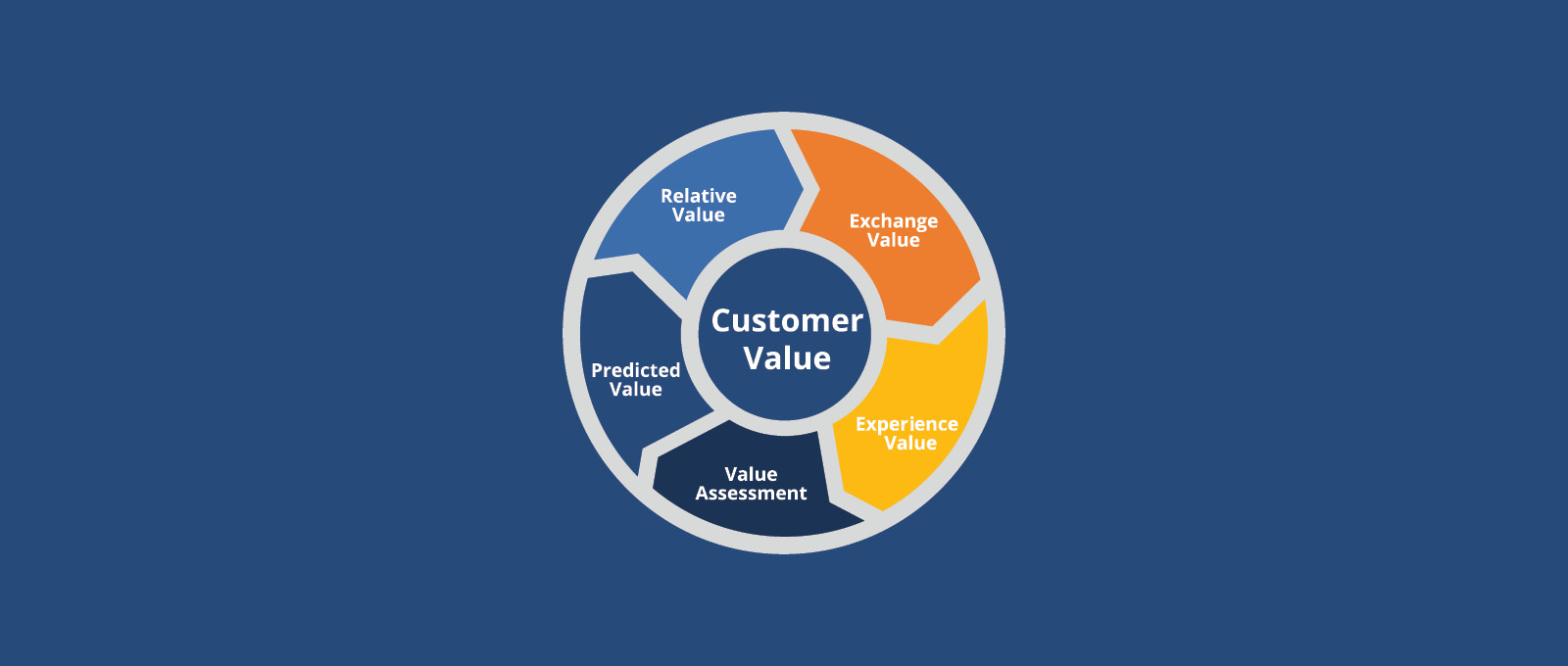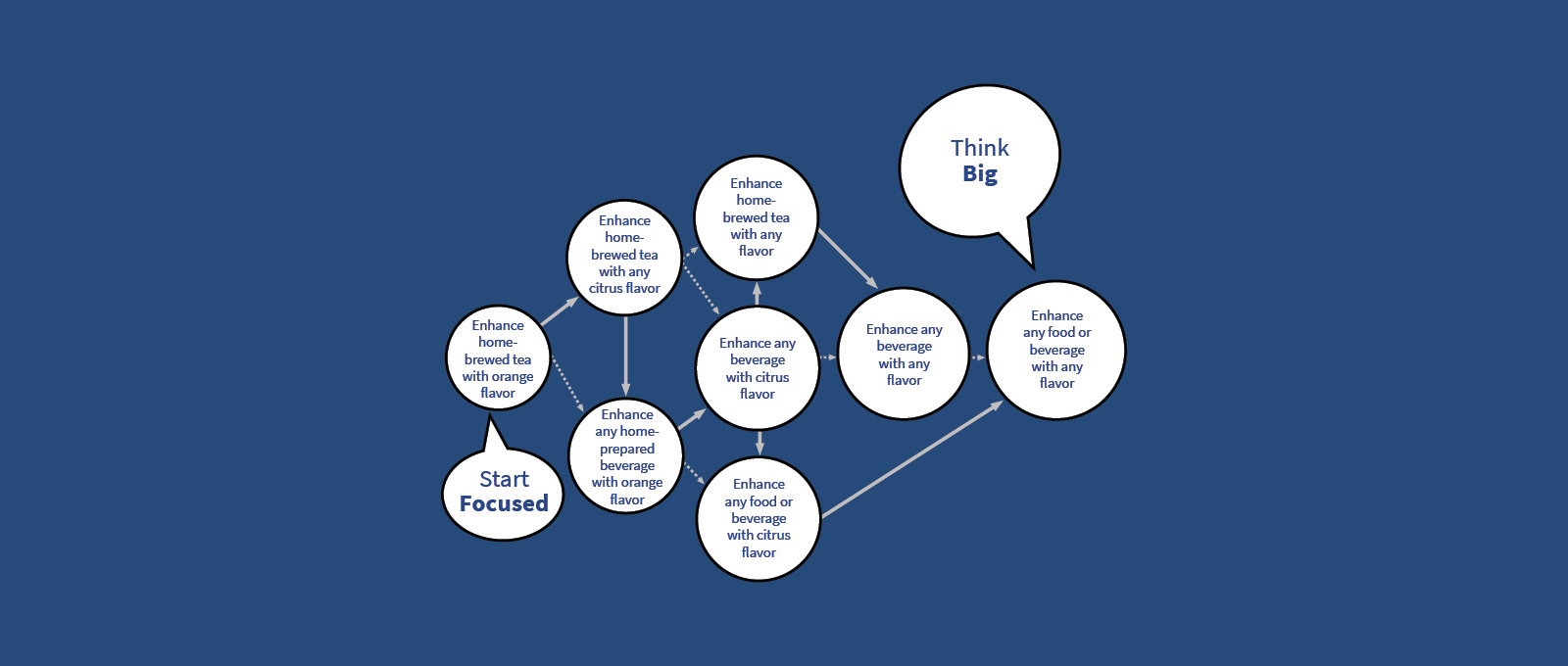34. Peter Klein on Pricing
Pricing is fundamental to business success – to generating transactions, to cash flow and to profitable operations. There’s a lot of uncertainty for entrepreneurs in the pricing process, and economics is a good source of clarity. In fact, Peter Klein tells us that economics used to be called price theory, recognizing this fundamental role of pricing in economic exchanges.
Key Takeaways and Actionable Insights
Austrian economics offers a special way of thinking about pricing that is helpful for entrepreneurs. Here is a 12-point list of pricing fundamentals.
1. Consumers set prices. This insight establishes the right entrepreneurial mindset: the entrepreneur can’t control pricing and shouldn’t try to. It only leads to frustration. Act on the basis of the consumer as the determiner of market prices.
2. Consumers don’t set or negotiate the price in every transaction. They are the determiners in the medium and long term. If sufficient numbers of them don’t feel they experience value at the price they’re asked to pay, they won’t buy and the entrepreneur will not be able to generate the revenue that’s called for in their business model. They’ll have to change their price, or their offering or their valued proposition.
3. A price holds only for one transaction. Just because it was the right price to get one consumer to transact at one moment in time and one context, does not mean it will hold for the future. Just because it is the sticker price or asking price does not mean the consumer has no alternative but to pay it.
4. That’s why Austrian Economics sees pricing as a dynamic and creative discovery process. The entrepreneur is charged with discovering the price the consumer is willing to pay now, in the future, in different circumstances and different contexts.
5. Price discovery goes further – to the design of specific packages of product / service and experiences. What will the consumer pay for the product now, with no waiting? What will they pay for same-day delivery? What will they pay for the product / service in a special physical location – is a newly-released movie in a luxury theater valued more than a 3-month old movie on a streaming service? Is a coffee in a cafe where the consumer can sit for a while more valued than a take-away cup?
6. The creativity and dynamism of pricing extends to promotions and discounts, including coupons, loyalty bonuses and time-based offers (10% off until midnight!)
7. The key to getting this creative and dynamic discovery process right is a deep knowledge of the consumer and their individual preferences. Senior discounts might be effective when they’re offered at a time of day that works for the retired seniors and not for working people. Coupon offers are effective for people with the time and inclination to collect and clip them, but wasted on consumers who feel too busy for such efforts. The smart entrepreneur exercises price segmentation.
8. The same principles apply to B2B pricing, although it might not be apparent in the entrepreneur’s subjective experience. The entrepreneur might feel that a retailer or wholesaler or customer to whom he or she is selling makes a take-it-or-leave-it offer on the price they are willing to pay. But the creative dynamism of discovery applies – the entrepreneur experiments with different packages of service levels, contract duration and other variables to find the right value combination that works best for both parties.
9. Once prices are discovered, the entrepreneur assembles resources to facilitate a profit at the prevailing price. This process is fundamental to Austrian price theory, yet the opposite of the typical business school scenario of cost-plus pricing. Business schools often get things backwards.
10. Entrepreneurs discover many ways to manage costs in the supply chain to meet the price the market dictates. One we talked about was channel management. For example, in the burgeoning Direct To Consumer (DTC) business model, entrepreneurs have eliminated the costs of doing business with physical wholesalers and brick-and-mortar retailers. Often the consumer is willing to pay an unchanged price. Alternatively, the entrepreneur can offer greater value via a lower price, as is the case with Warby Parker in the eyeglasses business, as well as many other innovative DTC brands.
11. The key to this process is simply to treat what accounting defines as “costs” as prices that are upstream from the entrepreneur. All prices can be discovered, negotiated or re-channeled. It may not seem that way to the entrepreneur who is buying from a seller with asymmetric negotiating power. But the dynamism, creativity and innovation of the price discovery process is always available and always on the entrepreneur’s side. The only prices we know are historical. All prices in the future are to be discovered and creatively negotiated.
12. Sometimes the creative solution is for buyers to organize themselves in a way that brings new negotiating power. Peter Klein used open source software as an example – users who are uncomfortable with the sticker prices of Microsoft or Oracle create an alternative service with an alternative price.
In summary
A price is the outcome of a single transaction – it does not necessarily hold for future transactions.
Prices are determined by the consumer – in the medium to long term.
Ultimately, the consumer also determines prices further up the value chain because all intermediate prices must contribute towards a cost-of-goods that is less than the price the consumer is willing to pay.
Entrepreneurs take control when they consider pricing as a dynamic, creative discovery process. Creativity spans pricing segmentation (different prices for different customers on different occasions in different contexts), pricing objectives (one transaction, multiple transactions, long term loyalty, etc) and product-service-price repackaging.
In all cases, deep knowledge and understanding of customers and vendors yields the understanding that informs effective creativity and discovery, and experimentation yields new knowledge.
DOWNLOAD
Download The Process of Pricing Discovery PDF (141 KB)







Leave a Reply
Want to join the discussion?Feel free to contribute!